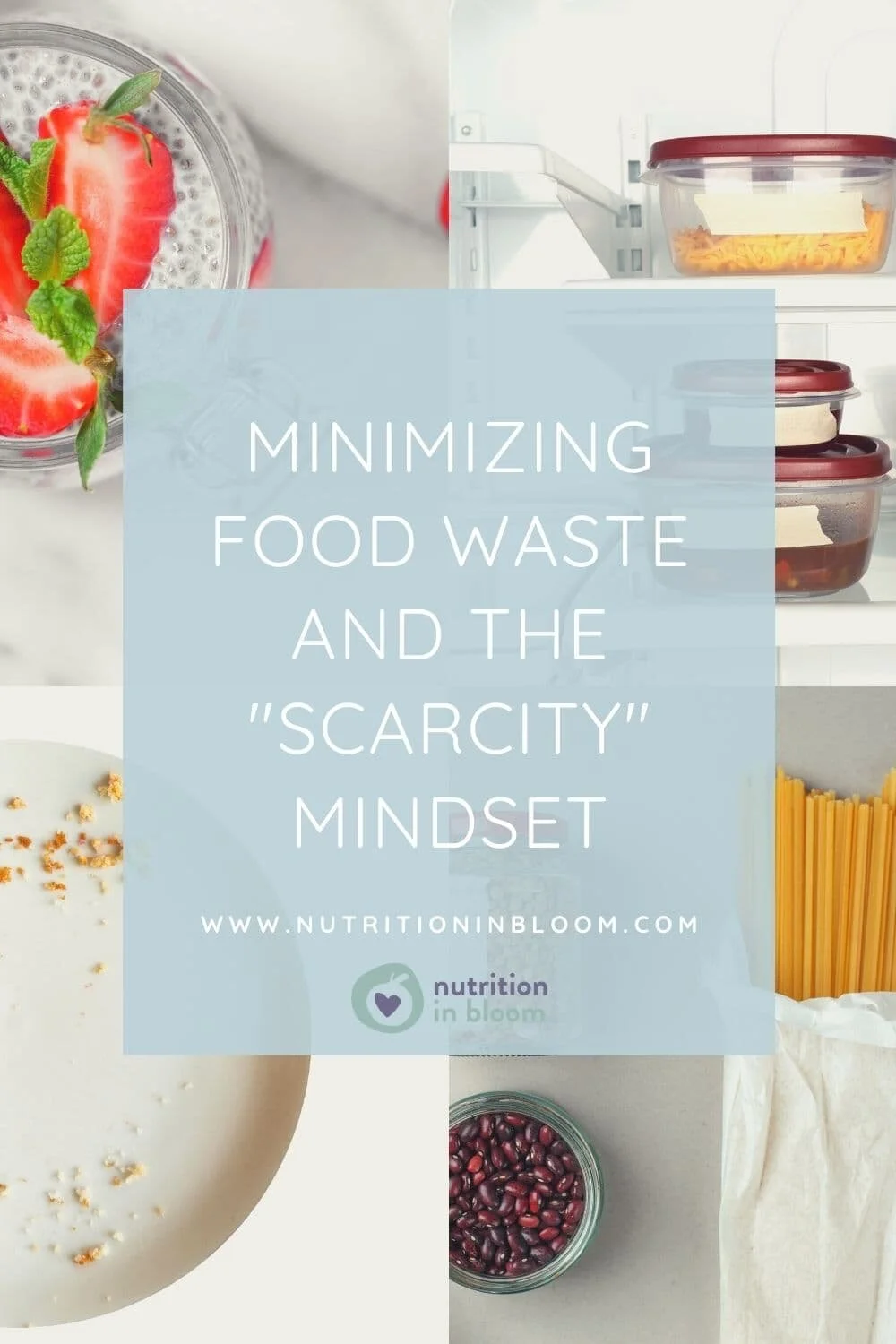Minimizing Food Waste and the "Scarcity" Mindset
At the time of this post COVID-19 has changed our lives in many ways, and many of us are practicing social distancing, under government recommendations or orders to shelter in place. We are figuring out how to live in this new normal, and as we limit ourselves to essential outings, the easy food availability to which we are accustomed is now more challenging. Still others are facing food insecurity due to the shifts in economic activity, while those of us lucky enough to maintain our incomes during this period face some new obstacles.
One of the questions on many parents’ minds is how we minimize food waste, and explain to our kids that some of the foods we usually have aren’t available. In this post I dive into this topic, and discuss how we can address this with our young ones at home.
I think it’s first important to address how we are talking to our children about COVID-19. All children are at different levels emotionally and developmentally, and it’s important to take that into account. I am not the expert on what to say to children at this time (but here is a great podcast on this topic, and I love this downloadable pdf). For my 5 year old, we discussed the fact that there is a sickness going around, and we have to stay home and away from other people until it starts to go away. She seemed to grasp this concept.
That being said, I do believe it’s important to let children know that some of the foods we usually get might not be available, since we are going to the store less frequently. If they feel mad or get upset, feel that with them. Empathize with them. We are frustrated too, and that’s okay. When they ask for a particular food, you can use phrases like, “Ugh, it’s such a bummer. We don’t have that right now. This is what’s on the menu tonight. The next time the food you wanted is available, should we get it and you can help me make it?” Really letting them know you get it is so important. In some of my previous posts I explain a 3 part framework for talking to children when they make dietary demands or requests:
Acknowledge
Set limits
Provide autonomy
This framework works really well here too.
I also want to acknowledge that tempers are high for everyone, so give yourself grace as you figure out how to respond. I know I have lost my temper more than I like to admit. It’s challenging.
Even though we don’t want to waste food, it’s important not to pressure our little ones to eat. We still need to let them be in control of what goes into their bodies (based on what we are offering).
Tuesday’s menu created by my 5 year old, Sydney
Even though some of us have snapped a new routine in place (or are struggling to create or maintain one) we can still provide autonomy, which ideally can help with the limited foods that are available. I love to have my girls help me create a menu in the morning for the day. We discuss, together, what we are going to have (and when something isn’t available that they request, I use that same framework above), my 5 year old likes to write out the menu (bonus: she is practicing her writing skills).
I have found that when my kids and I sit down together and discuss what’s on the menu, we have a plan. Having a plan leads to fewer tantrums and fights when it comes to the actual mealtime.
With the perception that our food stores are replenished less frequently, we as parents may feel that preferred foods are special or some economic anxiety that we need to be more efficient and less wasteful with the food we have. To combat food waste itself, I have a few suggestions.
Repurpose leftovers. I am a huge fan of repurposing leftovers, not just during this time but in general. I have previously shared a few of my favorite ways to repurpose leftovers, like making fritters, creating a veggie fried rice, or my personal favorite, leftover smoothie cookies. I have also been creating snack platters for my girls. At snack time I offer small amounts of 5 or 6 foods, some of which we may only have a little bit on hand.
Provide smaller amounts. Many times when we plate foods for our little ones, we end up putting a larger portion on their plate than they actually eat. Start small, and they can always get more. Or better yet, try serving food family style and let them plate themselves.
It’s a different time for us, and we are all figuring this out together. My goal is to provide you with tools and resources you can use to help make mealtimes more peaceful. Lots of deep breaths, and figuring out your favorite way to unwind after our little ones are in bed. You’ve got this!
And if you want to join the discussion on feeding kids during the time and beyond, I would love to have you in my free Facebook group. Come be a part of my community and let’s talk about new ways to combat these challenges.


